How to Install Dropbox on Debian 9 Stretch Desktop From Official Repository
This tutorial is going to show you how to install Dropbox on Debian 9 Stretch desktop from Dropbox Linux repository. Yes, you can download a debian package from Dropbox website and install it with dpkg, but this deb package won’t set up the Dropbox repository for you, which means you won’t get updates with apt update. As a matter of fact, the Dropbox debian package on the download page is an old version. The repository contains a newer version.
Enable sudo for Standard User Account
Some commands in this tutorial are prefixed with sudo. If your user account isn’t in the sudoer list, you can use the following command to switch to root user, assuming you know the root password.
su -
If you want to add the standard user account into sudoer list, run the following command as root. Replace username with your actual username.
adduser username sudo
Then install sudo utility.
apt install sudo
Log out and log back in for the change to take effect. From now on, the standard user can use sudo to manage the system.
How to Install Dropbox on Debian 9 Stretch Desktop From Official Repository
If you don’t have a Dropbox account yet, then click here to sign up. Next, in a terminal window, create a new source list file for Dropbox.
sudo nano /etc/apt/sources.list.d/dropbox.list
Add the following line to this file.
deb [arch=i386,amd64] http://linux.dropbox.com/debian jessie main
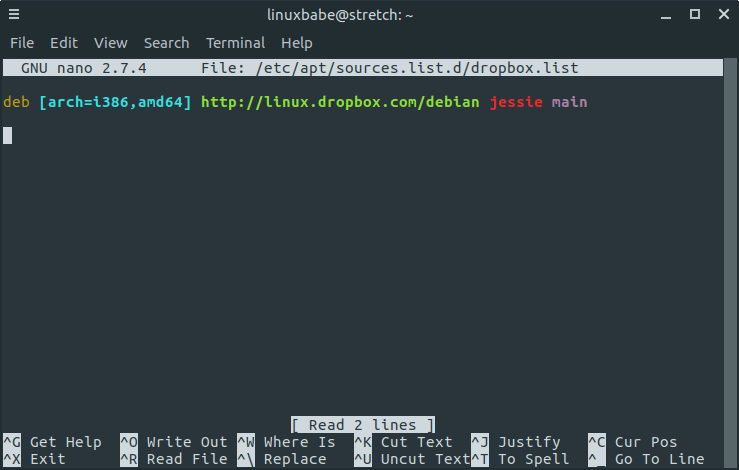
In nano text editor, press Ctrl+O, then press Enter to save the file. Press Ctrl+X to exit. Then run the following command to import Dropbox GPG key to your Debian 9 system.
sudo apt install dirmngr sudo apt-key adv --keyserver pgp.mit.edu --recv-keys 1C61A2656FB57B7E4DE0F4C1FC918B335044912E
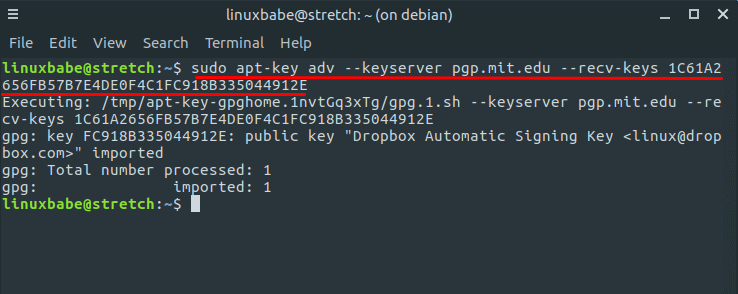
Next, update local package index and install Dropbox. python-gpgme is used to verify binary signature.
sudo apt update sudo apt install python-gpgme dropbox
Now you can start the Dropbox GUI installer from your application menu, or start Dropbox from command line. As a normal user, run the following command. The -i option will attempt to install Dropbox daemon if it’s not installed.
dropbox start -i
Click OK to install the daemon.
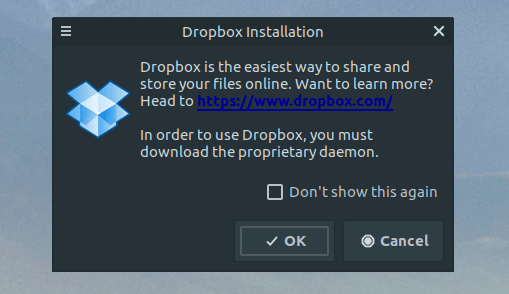
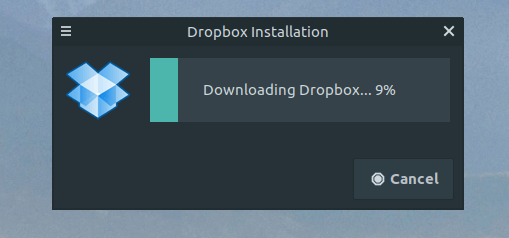
After the Dropbox daemon is installed, a new tab will be opened in your web browser asking you to link your computer to Dropbox account.
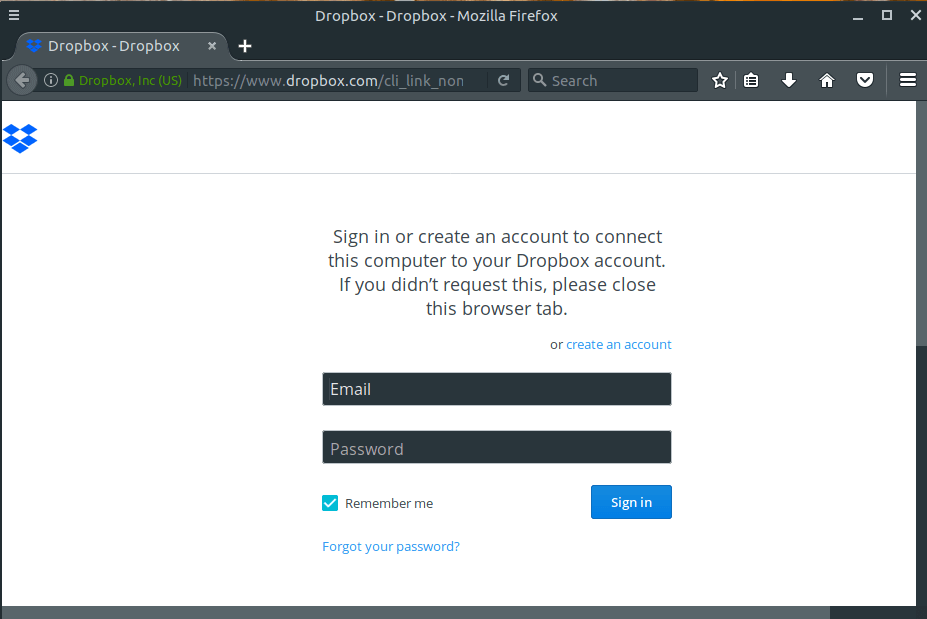
Now you can use Dropbox on your Debian 9 desktop. Dropbox Linux client supports HTTP, SOCKS4 and SOCKS5 proxy. You can configure proxy in Dropbox Preferences > Proxies. This is useful if your country or area is banned from accessing Dropbox. If you want to set up your own fast proxy server, follow this Shadowsocks tutorial.
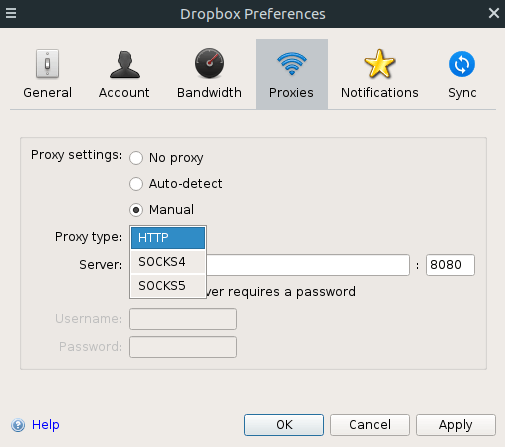
By default, Dropbox will automatically start at login. To disable this you can run this command:
dropbox autostart n
To enable autostart again, run
dropbox autostart y
For more Dropbox command line usage, issue this command:
man dropbox
How to Add a Dropbox Command to the Context Menu of File Manager
The Dropbox context menu command allows you to quickly add a folder on your computer to your Dropbox account and easily share your documents with others.
First, Install software-properties-common package, which provides us the add-apt-repository command.
sudo apt install software-properties-common
Enable non-free component.
sudo add-apt-repository non-free
Update local package index and install one of the following packages, depending on your file manager.
sudo apt update sudo apt install nautilus-dropbox (for GNOME desktop) sudo apt install caja-dropbox (for MATE desktop) sudo apt install thunar-dropbox-plugin (for XFCE desktop)
After it’s installed, restart your file manager.
nautilus --quit caja --quit thunar --quit
Now you have a Dropbox command when you right-click on a folder.
I hope this tutorial helped you install Dropbox on Debian 9 Stretch desktop. As always, if you found this post useful, then subscribe to our free newsletter to get new tutorials. Take care.


